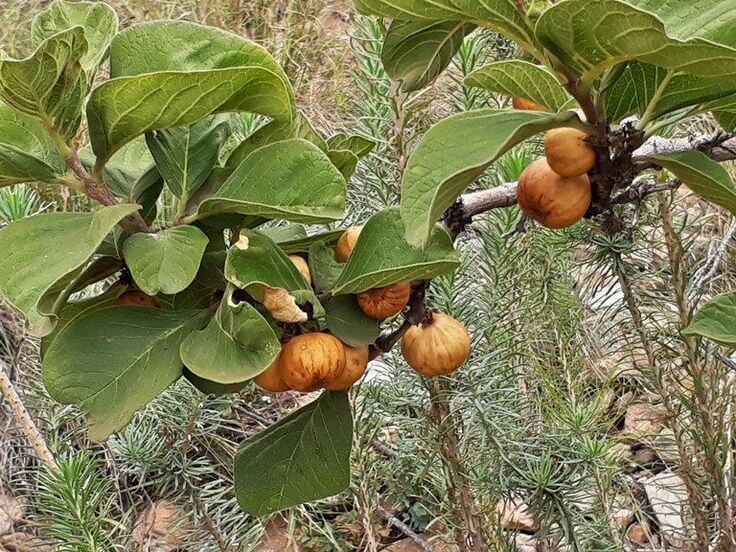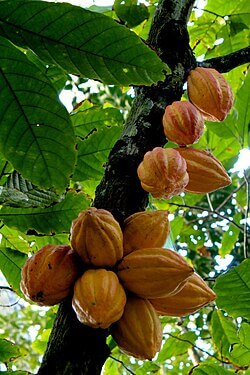If you’ve been thinking about adding fruit trees to your yard, why not choose ones that produce yellow fruits? Whether you plant them in the front or backyard, these trees can bring both beauty and flavor to your space. Yellow fruits have always stood out to me — their bright, sunny color feels cheerful and often suggests a unique sweetness with a tropical touch.
The best part is that many yellow fruit trees grow well in different climates. Each variety has its own needs for sunlight, soil, and care, so you can easily find one that suits your garden.
To help you get started, here are 24 yellow fruit trees worth considering. They not only provide fresh fruit but also make your garden more inviting and enjoyable.
1. Loquat

The loquat tree is a medium-sized evergreen with glossy green leaves and clusters of small yellow-orange fruits. Sweet yet slightly tangy, the fruits are best enjoyed fresh, though they also make tasty jams. Loquats thrive in warm climates and are valued not only for their flavor but also for their vitamins and antioxidants.
2. Canistel

Canistel, often called eggfruit, produces striking golden-yellow fruits with a dense, custard-like flesh. Its tree grows up to 10 meters tall and offers fruit rich in vitamins A, C, and E. The unusual texture resembles a cooked egg yolk, making it a unique addition to desserts, shakes, or simply eaten fresh.
3. Lemon

Bright yellow lemons are a classic sight on their fragrant, evergreen trees. Blossoms may appear year-round, filling the air with citrus perfume while fruits slowly ripen over 12 months. Self-fertile and productive, lemon trees are as practical as they are beautiful, bringing both ornamental charm and a steady supply of tart, refreshing fruit.
4. Quince

The quince tree bears golden-yellow fruits shaped like pears but with a firmer texture and sweet fragrance. Slow-growing and compact, it fits nicely into smaller gardens. While too hard to eat raw, quince turns wonderfully aromatic when cooked, and is perfect for jams, jellies, or baking.
5. Nance

Nance trees are small, compact, and easy to manage in gardens or even containers. Their clusters of tiny yellow fruits have a strong aroma and a distinctive flavor that blends sweet, sour, and slightly funky notes. Popular in Latin America, nance fruits can be eaten raw, cooked, or used in refreshing drinks and desserts.
6. Persimmon

Persimmon trees bring seasonal beauty as their orange-yellow fruits cling to branches even after leaves drop. The fruit’s honeyed flavor, with hints of spice, is delicious when fresh, dried, or pulped for baking. Persimmons are hardy and low-maintenance, and thrive in heavy soils. They are nutrient-rich, low in calories, and packed with fiber, vitamins, and antioxidants.
7. Medlar

The medlar is a charming old-world fruit tree, once treasured in European orchards. Its small yellow-brown fruits ripen late and soften only after a frost, developing a sweet, spiced flavor. They are easy to grow and lend a timeless, historic character to any garden.
8. Ugli Fruit

Ugli fruit may look rough with its thick, bumpy yellow-green skin, but the taste is bright and sweet. This Jamaican tangelo is a natural hybrid of grapefruit, tangerine, and orange. The tree thrives in warm regions, rewarding growers with large, aromatic fruits that are easy to peel and enjoy fresh.
9. Yellow Apple

Golden-yellow apple varieties like Yellow Delicious or Dosertt Golden Apple are sweet, smooth-skinned, and perfect for eating fresh, baking pies, or making preserves. These hardy trees thrive even in poor soils and cold winters, making them reliable growers. Their crisp fruit adds both color and flavor to orchards and home gardens alike.
10. Yellow Plum

Yellow plums, including the Early Golden and Shiro varieties, brighten the tree with their sunny fruits. They are sweeter and less tart than other plums, and taste great fresh or when made into jams.
11. Yellow Pear Guava

The yellow pear guava tree grows best in sunshine and well-drained soil, giving clusters of small yellow fruits. Their sweet-tart flavor makes them refreshing fresh, in juices, or as preserves. With their glossy green leaves and reliable fruiting, guava trees add both beauty and usefulness to warm-climate gardens.
12. Abiu

Native to the Amazon, the abiu tree bears smooth yellow fruits filled with creamy, jelly-like pulp that tastes of caramel and vanilla. This tropical fruit is rich in vitamins and minerals, making it both nutritious and exotic. Abiu fruits are enjoyed fresh or scooped straight from the skin with a spoon.
13. Starfruit

Starfruit trees produce clusters of golden-yellow, five-ribbed fruits that reveal a star shape when sliced. Abiu fruit is sweet and tangy, refreshing, rich in vitamin C, and low in calories. With good care, trees can yield hundreds of pounds of fruit, making them a productive choice for home gardens in warm climates.
14. Hog Plum

The hog plum tree fills with small fruits that taste like a cross between mango and citrus. Eaten fresh, cooked, or made into jams, they’re as versatile as they are unique. Though less known than other tropical fruits, hog plums are packed with nutrients and thrive in warm, humid regions.
15. Yellow Peach

Few fruits capture summer like the yellow peach, with its golden skin, red blush, and juicy sweet flesh. Peach trees are self-fertile, meaning you only need one tree for fruit. Lovely in bloom and generous in harvest, these trees add beauty to gardens while delivering one of the season’s sweetest rewards.
16. Mandarin

Mandarin trees, native to Asia, light up with clusters of small yellow-orange fruits that peel easily and taste sweet. Upright and thorny, they can reach up to 20 feet tall but also come in compact forms for smaller spaces. Many gardeners love them for their shiny leaves, sweet-smelling flowers, and tasty fruit.
17. Yellow Custard Apple

The yellow custard apple tree is easy to grow and often gives golden-brown fruits with creamy, custard-like flesh that’s sweet and refreshing. Often eaten raw or blended into smoothies, this low-maintenance tree is a favorite for home gardens and tropical-style orchards.
18. Cempedak

Cempedak, a cousin of jackfruit, is famous in Southeast Asia for its intense aroma and rich, honey-sweet taste. Its golden-yellow flesh is juicy, sometimes melting, sometimes fibrous, but always flavorful. While some adore its strong scent, others find it overpowering. Cempedak is a true delicacy, enjoyed fresh, fried, or in desserts
19. Yellow Dragon Fruit

With its striking yellow skin and white, seed-speckled flesh, yellow dragon fruit is both exotic and easy to grow. Its mild, sweet taste makes it perfect for fruit salads, smoothies, or simply scooped out with a spoon. Packed with antioxidants and vitamins, this tropical beauty adds color and health to any garden.
20. Cacao

The cacao tree produces football-shaped pods that ripen yellow to orange, filled with seeds surrounded by sweet white pulp. These seeds, once dried and processed, become chocolate — one of the world’s most beloved treats. Beyond its delicious product, the cacao tree is a stunning tropical plant with unique flowers sprouting directly from its trunk.
21. Jelly Palm

The jelly palm, a small ornamental palm from Brazil, produces clusters of yellow, plum-sized fruits in summer. Sweet and tangy, the fruits are often turned into jellies or enjoyed fresh. Its graceful fronds and edible harvest make it both decorative and practical, perfect for adding a tropical feel to warm-climate gardens.
22. Yellow Rambutan

The yellow rambutan, with its spiky, soft “hairy” skin, looks exotic and playful. Inside, the translucent flesh is sweet and juicy, though its seeds must be cooked before eating. Native to the tropics, these trees thrive in hot climates and reward growers with bright yellow clusters of fruit that taste as good as they look.
23. Yellow Fig

Yellow figs are small, golden fruits that grow on compact trees perfect for warm gardens. Their sweet, honey-like flavor pairs well with cheeses or baked goods. Easy to grow and visually appealing, the fig tree doubles as both a fruit producer and a lovely landscape plant, thriving in sun-rich, mild climates.
24. Khirni (Rayan)

The khirni tree, also called rayan, is a hidden gem of South Asia. Its small, oval yellow fruits have soft, creamy pulp with a gentle sweetness and mild aroma. Valued not only for its taste but also for its traditional medicinal uses, khirni trees are treasured in rural landscapes for both food and heritage.
